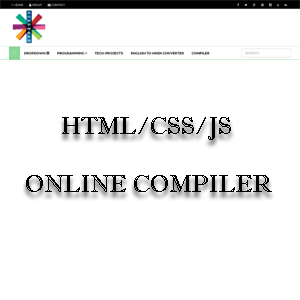Handling Exceptions in an API when Integrating with an API Gateway.
Handling exceptions in an API when integrating with an API Gateway is crucial for maintaining robust, secure, and user-friendly services. The API Gateway often acts as a middleman between your clients and your backend services, so it needs to handle errors effectively to ensure that meaningful and actionable responses are provided to clients.
Here's a structured approach to handling exceptions from your API to the API Gateway:
Design Consistent Error Responses:
Ensure that your backend APIs provide consistent and meaningful error responses. This helps the API Gateway understand and relay errors appropriately.
Design Consistent Error Responses:
Ensure that your backend APIs provide consistent and meaningful error responses. This helps the API Gateway understand and relay errors appropriately.
Example Error Response Structure:
Handle Exceptions in Backend Services: Implement proper exception handling in your backend services. Catch exceptions and convert them into meaningful error responses.
json
{
"error": {
"code": "RESOURCE_NOT_FOUND",
"message": "The requested resource was not found.",
"details": "Resource ID: 12345"
}
}
Handle Exceptions in Backend Services: Implement proper exception handling in your backend services. Catch exceptions and convert them into meaningful error responses.
Java Example:
Configure API Gateway for Error Handling:
API Gateways like AWS API Gateway, Google Cloud Endpoints, or Azure API Management allow you to configure how errors are handled and transformed.
import org.springframework.http.HttpStatus;
import org.springframework.http.ResponseEntity;
import org.springframework.web.bind.annotation.ExceptionHandler;
import org.springframework.web.bind.annotation.RestControllerAdvice;
@RestControllerAdvice
public class GlobalExceptionHandler {
@ExceptionHandler(ResourceNotFoundException.class)
public ResponseEntity<ErrorResponse> handleResourceNotFound(ResourceNotFoundException ex) {
ErrorResponse errorResponse = new ErrorResponse("RESOURCE_NOT_FOUND", ex.getMessage());
return new ResponseEntity<>(errorResponse, HttpStatus.NOT_FOUND);
}
@ExceptionHandler(Exception.class)
public ResponseEntity<ErrorResponse> handleGeneralException(Exception ex) {
ErrorResponse errorResponse = new ErrorResponse("INTERNAL_SERVER_ERROR", "An unexpected error occurred.");
return new ResponseEntity<>(errorResponse, HttpStatus.INTERNAL_SERVER_ERROR);
}
// Define ErrorResponse class
public static class ErrorResponse {
private String code;
private String message;
// Constructor, getters, and setters
}
}
Configure API Gateway for Error Handling:
API Gateways like AWS API Gateway, Google Cloud Endpoints, or Azure API Management allow you to configure how errors are handled and transformed.
AWS API Gateway Example:
Create Custom Error Responses:
Define custom error responses in the API Gateway settings. This includes mapping HTTP status codes from your backend to user-friendly messages or custom error codes.
Set Up Gateway Responses:
Configure Gateway Responses to handle specific HTTP status codes (e.g., 500 Internal Server Error) and provide custom error messages or redirection.
Use Integration Responses:
Map backend error responses to different HTTP status codes and customize the response format in the API Gateway
Logging and Monitoring:
Implement logging and monitoring to track and analyze errors. This helps in diagnosing issues and improving your API services.
Logging and Monitoring:
Implement logging and monitoring to track and analyze errors. This helps in diagnosing issues and improving your API services.
Example Using AWS CloudWatch:
Enable Logging: Configure API Gateway to log request and response details.
Set Up Alarms: Create CloudWatch Alarms for specific error conditions (e.g., high 5xx error rates).
Testing and Validation: Thoroughly test your API error handling to ensure that errors are propagated and transformed correctly through the API Gateway.
Testing and Validation: Thoroughly test your API error handling to ensure that errors are propagated and transformed correctly through the API Gateway.
Steps:
Unit Tests: Test backend error responses and exception handling.
Integration Tests: Test the full flow through the API Gateway to ensure errors are handled correctly and responses are as expected.
Summary:
Backend Services: Handle exceptions and return consistent error responses.
Summary:
Backend Services: Handle exceptions and return consistent error responses.
API Gateway Configuration: Map and customize error responses, configure Gateway Responses, and set up logging.
Logging and Monitoring: Track errors and performance using tools like AWS CloudWatch.
Testing:
Validate error handling through unit and integration tests.
By following these steps, you ensure that your API Gateway can effectively manage and relay errors,
providing a better experience for clients and aiding in the maintenance and debugging of your services.
Subscribe to:
Post Comments
(
Atom
)





https://a143mk.blogspot.com/
ReplyDeletehttps://themewagon.com/theme-price/free/
ReplyDeletehttps://www.free-css.com/template-categories/responsive
ReplyDeleteAPIResponseEntityBean:
ReplyDeletepublic class APIResponseEntityBean {
private String responseCode;
private String responseMessage;
private String responseTimeStamp;
private Object responseData;
public String getResponseCode() {
return responseCode;
}
public void setResponseCode(String responseCode) {
this.responseCode = responseCode;
}
public String getResponseMessage() {
return responseMessage;
}
public void setResponseMessage(String responseMessage) {
this.responseMessage = responseMessage;
}
public String getResponseTimeStamp() {
return responseTimeStamp;
}
public void setResponseTimeStamp(String responseTimeStamp) {
this.responseTimeStamp = responseTimeStamp;
}
public Object getResponseData() {
return responseData;
}
public void setResponseData(Object responseData) {
this.responseData = responseData;
}
public APIResponseEntityBean(String responseCode, String responseMessage, String responseTimeStamp,
Object responseData) {
super();
this.responseCode = responseCode;
this.responseMessage = responseMessage;
this.responseTimeStamp = responseTimeStamp;
this.responseData = responseData;
}
@Override
public String toString() {
return "APIResponseEntityBean [responseCode=" + responseCode +
", responseMessage=" + responseMessage+ ", responseTimeStamp=" + responseTimeStamp + "]";
}
@RestController:
ReplyDelete@RequestMapping(method = RequestMethod.GET, value="/MdmCustomerMasterList") ///, produces = {MediaType.APPLICATION_JSON_VALUE}
public ResponseEntity getMdmCustomerMasterList() {
APIResponseEntityBean responseEntityBean = null;
Object retunResult=null;
try {
/*Log4je Config*/
ClassLoader loader = Thread.currentThread().getContextClassLoader();
URL url = loader.getResource("application.properties");
PropertyConfigurator.configure(url);
/* End Log4je Config*/
logger.info("Get CustomerMasterController Method is getMdmCustomerMasterList()");
retunResult=custMasteServ.getMdmCustomerMasterEntityList();
responseEntityBean = new APIResponseEntityBean("SUCCESS", "Response Generated Successfully!", dtFormater.format(new Date()), retunResult);
} catch (Exception e) {
// TODO: handle exception
responseEntityBean = new APIResponseEntityBean("ERROR", e.getMessage(),dtFormater.format(new Date()), retunResult);
logger.error(e.getMessage());
//e.printStackTrace();
}
return new ResponseEntity(responseEntityBean, HttpStatus.OK);
}